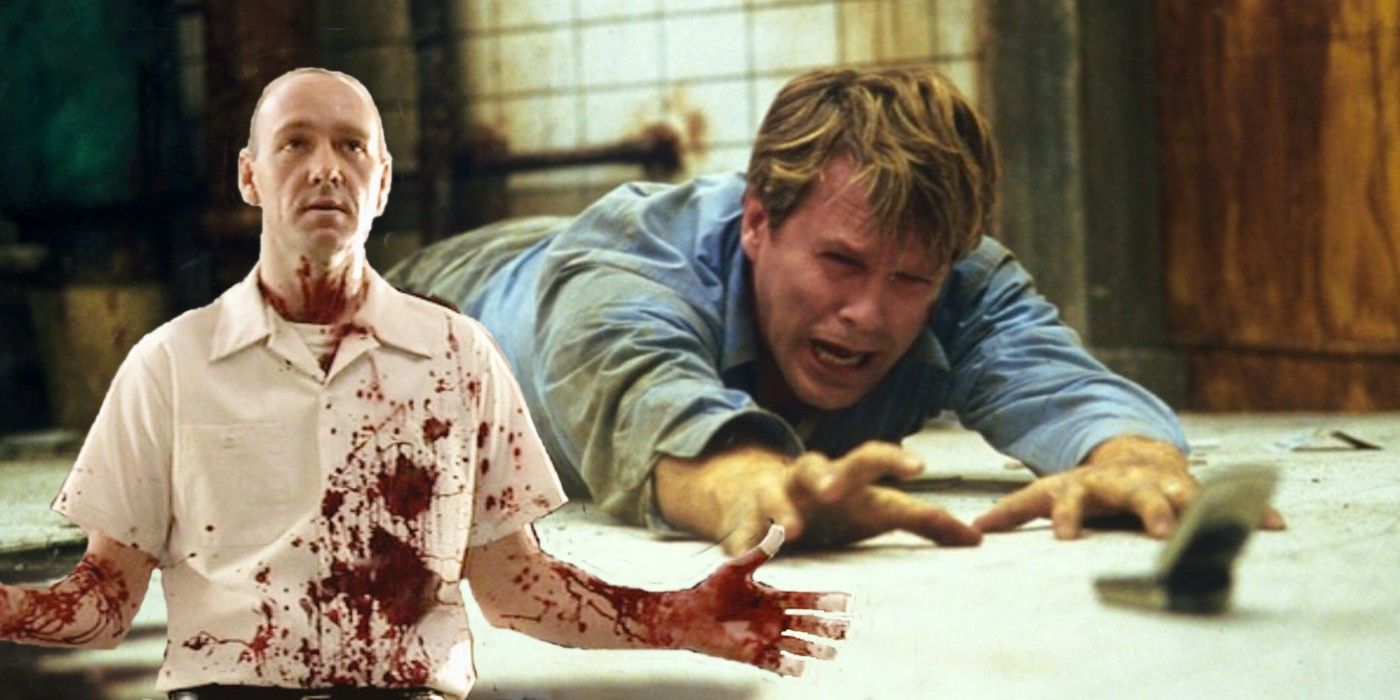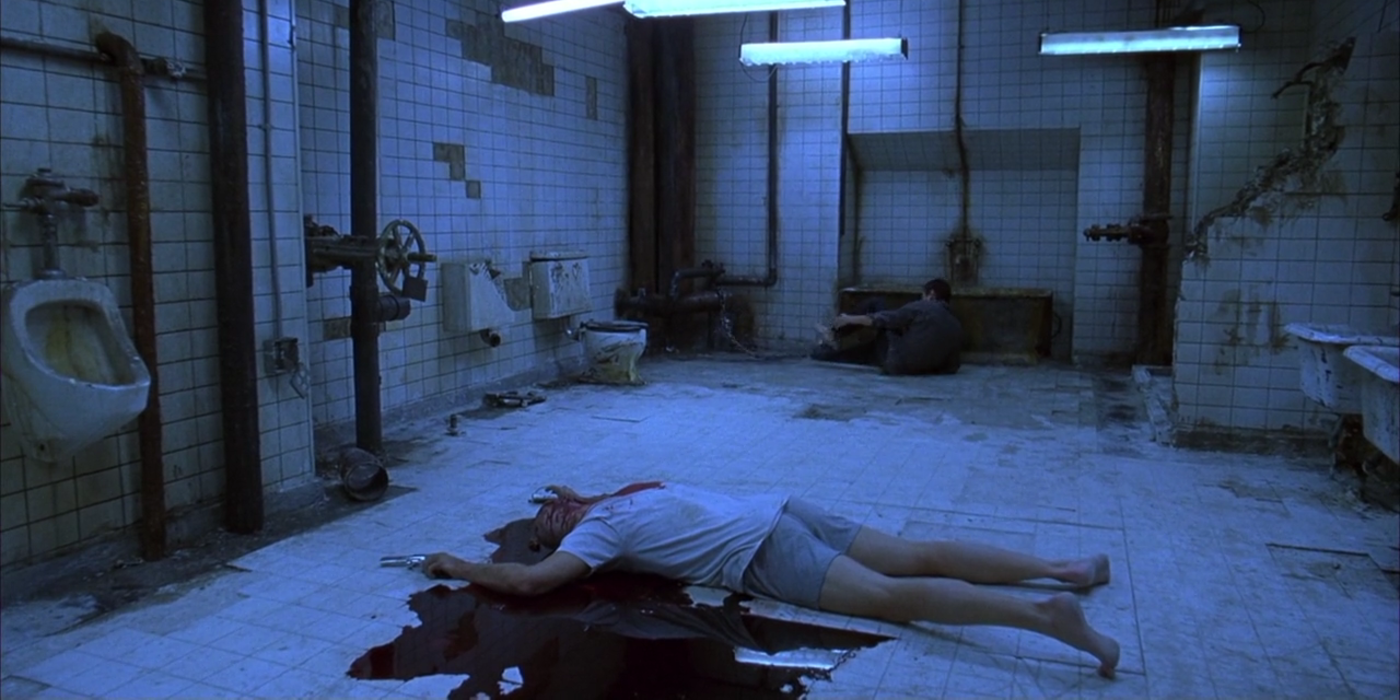The 2004 psychological thriller, Saw would go on to spawn a massive horror franchise, but the inspiration for the iconic film’s plot—and the twist—came from an unexpected place. Director James Wan and writer/actor Leigh Whannell made Saw right out of film school, writing the script based on a need to do things as cheaply as possible coupled with an idea Wan had for a story that revolves around two men and one room.
The plot for Saw focuses on two men, played by Leigh Whannell and Cary Elwes, who wake up to find themselves chained to opposite ends of a dilapidated bathroom. Neither knows who the other is or how they got there, and there’s a corpse lying in the center of the room face-down in a pool of blood. The plot of the film follows these men’s struggle as they try to figure out what’s going on, why they’re in the room, and how they can escape.
While the crux of this film arose from a need to make a compelling movie with very little money, the inspiration for much of the plot, as well as how the story twists and turns to create an intriguing mystery, is inspired by one of Whannell’s favorite movies: David Fincher’s Se7en.
How A Crime Thriller Inspired the Saw Franchise
James Wan and Leigh Whannell have given numerous interviews about the making of Saw and what inspired the idea and story behind the film, but the biggest inspiration for Whannell as he was writing the script was David Fincher’s 1995 psychological crime thriller Se7en, starring Brad Pitt and Morgan Freeman. The original Saw is very different from its sequels in that it plays out like a mystery thriller rather than the “torture porn” the rest of the franchise is known for highlighting.
As the movie progresses, the men learn more about who they are and why they’re in the room together, and as one is ordered to kill the other or die, things get increasingly insane as plot wrinkles are uncovered. The twist ending, of course, is that the man in the center of the room isn’t dead at all; he’s actually Jigsaw, the killer who has trapped them both there.
In Shudder’s series The Core, Leigh Whannell talked with host Mickey Keating about Se7en and how important the movie was to his development as a filmmaker. He said, “That script - I still have it today - was my bible. I read it so much, and I learned so much about constructing a mystery.” He then went on to examine specifically the scene in Se7en when the detectives are investigating the crime scene of the Sloth victim. Discussing jump scares, Keating specifically mentions the misdirect of assuming the Sloth victim is a corpse and how disturbing it is when they’re revealed to be alive.
It's likely Se7en helped to inspire the Saw twist ending, based on the similarity between those two plot points, but the films share a lot in common aside from that as well. Saw and Se7en both focus on two men innately tied together in a struggle against a third character—an unseen murderer who chooses to kill people based on his own dogmatic vision of how people should behave. In Se7en, it’s John Doe punishing people for violating the biblical seven deadly sins, while in Saw it’s Jigsaw killing people he views as not appropriately valuing their life.
While the legacies of Saw and Se7en may be very different, it’s clear that Leigh Whannell highly values David Fincher’s film as an inspiration for his work. With Leigh Whannell still active in horror today, and a new Saw installation coming in 2021, the franchise has clearly stood the test of time for almost twenty years.


